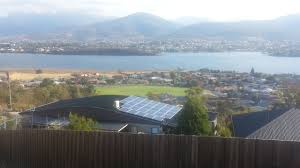The Tasmanian Government has charged ahead of mainland Australia by launching a new climate action plan that will commit the state to 100 per cent renewables by 2020 and a 35 per cent reduction in emissions.
Mainland Australia is now almost exclusively controlled by federal and state local governments who are opposed to climate change policies and are seeking to slow the investment of renewables. The only two exceptions are the Labor government in the ACT, which has a 90 per cent renewables target by 2020, and the Labor government in South Australia, which is heading to more than 50 per cent renewables by the same time.
Both are now being out-bid by the Labor-Green Coalition in Tasmania which aims to lift its hydro-rich state from an average 87 per cent renewables penetration to 100 per cent – mostly by removing the need to import coal-fired power from Victoria.
The government this week released its Climate Smart Tasmania: A 2020 Climate Change Strategy. “It’s the most comprehensive plan by any Australian Government to reduce carbon emissions and help communities adapt to a changing climate, built on more than a year of careful research and consultation,” Cassy O’Connor, the Tasmanian Climate Change Minister, said.
She noted in was in vast contrast to the actions of the Tony Abbott government, which has abandoned the country’s long-held emissions reduction target, started working on repealing the carbon price, and destroyed our international standing at U.N. talks in Warsaw.
“With a climate denialist government in Canberra determined to wind back Australia’s efforts to reduce emissions, it’s more important than ever that Tasmania shows leadership. We’re already making great progress,” O’Connor said.
A large part of the plan is to stop importing coal-fired power from mainland Australia, which constituted 15 per cent of total energy use in 2007. Tasmania has also set a goal to reduce emissions by 60 per cent below 1990 levels by 2050.
The plan focuses on energy efficiency in existing buildings, monitoring emissions and biodiversity, water use efficiency, reducing barriers to utilising renewable energies, training Tasmania’s workforce, looking into electrification of public transport as well as managing and reducing natural hazard risks in the state.
The state says it has enough renewable energy resources (wind and biomass in the short-term, geothermal in the medium-term and wave and tidal in the long-term) to supply electricity Tasmanian electricity demand with leftover generating capacity to export electricity to the mainland.
“The proportion of energy generated from renewable sources varies from year to year as it is influenced by factors such as rainfall patterns. However, given the potential developments already announced in the State, Tasmania’s electricity production from renewable sources is likely to exceed 100 per cent of the State’s annual demand by 2020 allowing the surplus to be exported,” the document says.
“By encouraging continued investment in this sector, Tasmania can enjoy direct and indirect economic benefits, including job creation, enhancing the State’s strong renewable energy brand and the potential to attract new, large-scale industries that wish to capitalise on this brand.”
Among its policy initiatives is to extending the Renewable Energy Loan Scheme (RELS ) and broadening eligibility to include community organisations.
The Government has outlined its top ten actions for carbon abatement and net benefits including; constraining urban growth, carbon smart farming, a light rail and smart transport network, seven star rated buildings, the Tasmanian energy savings initiative, replacement of metro bus fleet, a North-South metro transit corridor, influencing travel behavioural change or ‘smart trips’ and safe and efficient driving.








